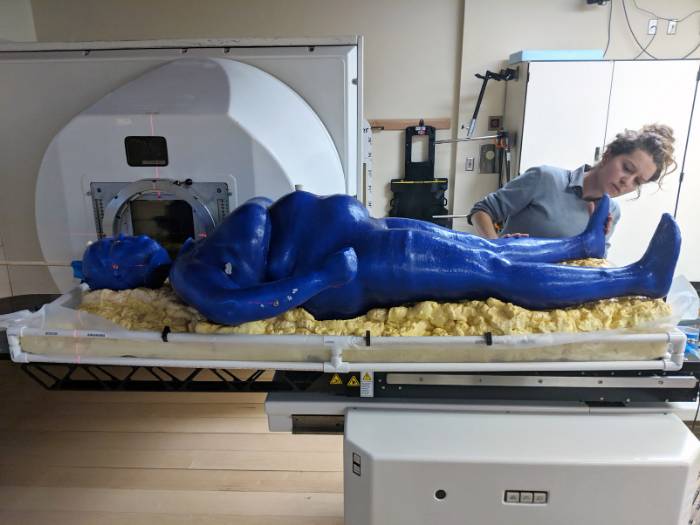Meagan Moore, a Biological and Agricultural Engineering student from Louisiana State University (LSU) has 3D printed a full-size model of the human body for use in radiotherapy.
Such models used in radiotherapy mimic the human tissue, and in medical terms are known as imaging phantoms or phantoms. They are used in radiotherapy to estimate the amount of dose delivery and distribution. A customized phantom of a patient can make the whole process more precise.

3D printing and cancer research
As has been previously reported, 3D printing is being explored by researchers for use in cancer treatment. Earlier this year, Adaptiiv Medical Technologies’ 3D printed bolus was approved for radiation therapy.
Furthermore, in September, University of Pittsburgh scientists proposed using 3D printed phantom head for improved MRI results.
Despite the advances in research, phantoms, currently available on the market, are not representative of the patient’s body and are without limbs. Whereas, Moore’s female phantom Marie (as she has named it) has a full-body with limbs.
Moore explained, “Phantoms have been used in medical and health physics for decades as surrogates for human tissue … The issue is that most dosimetric models are currently made from a standard when people of all body types get cancer. No personalized full-body phantoms currently exist.”
Full body 3D printed phantom
Marie was modeled using 3D scans of five real women. It took more than hundred hours to 3D print Marie, using a large-format 3D printer by the German company BigRep. The phantom was 3D printed in four parts, which were joined using various methods, such as soldering, sandblasting, and welding.
Marie is 5.1 ft tall and can hold thirty-six gallons of water inside her body. The walls of the body are enforced with a roofing sealant and liquid latex.
Seattle’s UW Medical Cyclotron Facility, a cancer research organization, has shown interest in testing the full-body phantom for cancer therapy. The facility would like to test Marie for fast neutron therapy, in which high energy neutrons are used for treatment. Seattle is among the five places in the U.S that offer fast neutron therapy.
Moore was helped in ‘The Phantom Project’ by her mentor Dr.Wayne Newhauser, who is known for his efforts promoting 3D printing for cancer treatment. Moore added, “The initial idea for the whole project wasn’t completely my idea … I met him [Dr. Newhauser] at his TED Talk, where he did a presentation on 3D printing and how it’s interfacing with science.” She continued, “Since I had just started doing 3D modeling of my own, I showed him my 3D prints. This project took off from his work with breast cancer and computational modeling.”
Nominations are open for 3D Printing Awards 2019. Please let us know about leaders in the industry.
For more news on 3D printing and cancer research, subscribe to our 3D printing newsletter, and follow us on Twitter and Facebook.
Visit our 3D Printing Jobs site for jobs in the 3D printing industry.
Feature image shows Marie, a 3D printed imaging phantom. Image via Louisiana State University


